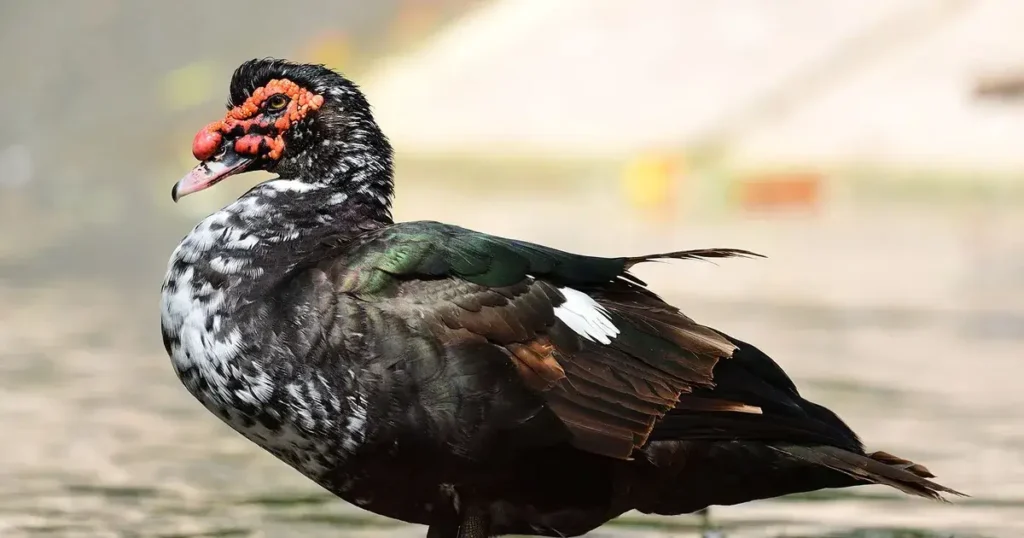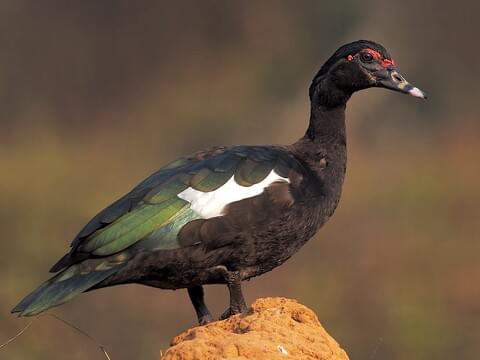Muscovy Duck


Scientific Name: Cairina moschata
Alternative Names: Barbary Duck, Pato Criollo, Musk Duck
Measurements:
| Feature | Male | Female |
|---|---|---|
| Length | 76–84 cm (30–33 in) | 71–76 cm (28–30 in) |
| Weight | Up to 4 kg (8.8 lb) | About half that weight |
| Wingspan | 137–152 cm (54–60 in) | 137–152 cm (54–60 in) |
Status
A native of Central and South America, the Muscovy Duck has been domesticated and now lives in both wild and feral populations across the Americas, Europe, Australia, and New Zealand.
Identification
A large, mostly black duck with glossy green or purple reflections on the wings and big white patches. Males are easily recognized by their red, bumpy facial skin and prominent knob, while females are smaller and duller in color. Both have dark legs, broad tails, and strong, slightly hooked bills. Feral birds often show more white in the wings or neck.
Voice
Males give a low hiss or puffing sound, while females make a light trilling call.
Diet
Omnivorous—feeding on grasses, roots, aquatic plants, insects, crustaceans, and occasionally small fish.
Distribution
Wild populations range from Mexico to Argentina, with feral groups established in cities, farms, and ponds worldwide.
Habitat
Prefers forested wetlands, lakes, and slow-moving rivers but adapts easily to farmlands and urban parks. Known for perching in trees and roosting near water.
Breeding
Nests in tree hollows or on the ground, laying 8–15 white eggs. The female incubates for about 30 days, while males sometimes guard the brood for several weeks.
Wintering
Non-migratory and cold-tolerant, able to withstand temperatures down to −12 °C (10 °F).
